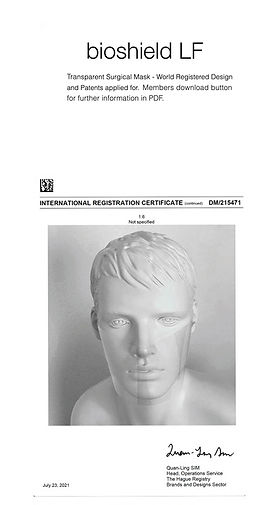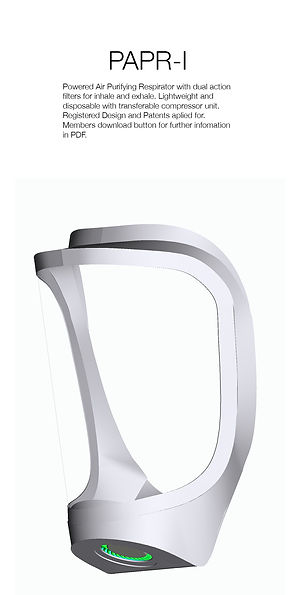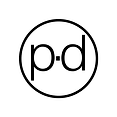
PAPR-I




Powered Purified Air Respirator - Isolated (PAPR-I)
Background studies
Use of PAPR's as related to FFP2 and FFP3 type one-time-use masks.
The design and use of masks has come under much greater study due to their use being recommended to help counter risks of spreading COVID - 19, principally via exhaled respiratory aerosol droplets. Several studies have shown that the FFP2 and FFP3 type of mask while being effective in reducing laboratory verified virus infections, they are not recommended for use over extended periods due to build up and re-breathing of the exhalate trapped within the mask.
Oxygen values have been shown to drop from 21% to 16% (OSHA states 19.5% is the minimum level of oxygen for a working environment) and there can be a 100 fold increase in carbon dioxide from 0.04% or 400 ppm to around 4.0% or 40,000 ppm.
ASHRAE and OSHA carbon dioxide acceptable level standard: 1,000 ppm
General drowsiness: 1,000 - 2,500 ppm
Adverse health effects may be expected: 2,500 - 5,000 ppm
Maximum allowed concentration within a 8 hour working period: 5,000 - 10,000 ppm
Maximum allowed concentration within a 15 minute working period: 30,000 ppm
The FFP2 and FFP3 type of mask also reduces the normal air flow and the user has to work harder to breath at the normal rate. There is a standard measure for breathing resistance and OSHA sets a maximum of 30 H2O units back pressure for a standard flow rate. Generally any mask over 15 H2O is noticeably more difficult to breath through.
Due to the nose and mouth being covered, a significant reduction in both aural and visual communication is experienced which impacts operational effectiveness.
From a social/psychological stand point, the adoption of face masks for health care workers reduces their ability to provide adequate communication, care and reassurance for their patients.
The use of PAPR systems has seen a big increase despite the systems not being appropriate or designed for use in viral aerosol control applications or isolation wards. Typically a PAPR is designed for use in areas where the air is contaminated by various hazardous elements such as dust, smoke, spray paint etc. and no filtering of the users exhalate is provide for.
Normally in a medical setting a surgical mask is worn inside the PAPR hood. However the surgical mask provides little to no added protection to patients when using a normal PAPR on an isolation ward as there is no built-in filtering for the users exhalate and aerosol dispersion will be increased.
For Covid-19 testing facilities for example the personal protective equipment for operatives could be improved as the one piece protective overall hood does not fit over current PAPR equipment and the hood is an essential feature of such protective equipment.
Generally available PAPR’s are made to be durable in an industrial setting and are correspondingly expensive and as such have to be shared by users and cleaned between each use.
Usually in two main parts with an air compressor and battery worn on the waist, and a fabric hood with a semi-rigid visor. The two components are connected by a large diameter flexible hose and typically these systems can weigh between 1-2 kilograms. Effective cleaning of this equipment is time consuming and generally shortcuts are taken.
bioshield PAPR-I solutions.
Methods of construction to achieve a lightweight transparent device that mitigates all of the above deficiencies in current FFP2 and FFP3 type masks and available PAPR systems.
The PAPR-I is a disposable, ultra-light full face transparent mask, using a flexible foil material, that also houses a small self-contained powered air compressor at the base of the mask. The compressor draws air into the mask through inlet filter areas at the base. Notably the re-usable compressor is inside the mask and is not contaminated by the environment. The compressor essentially provides a laminar airflow over the transparent foil within the mask from the base. The laminar air stream directly entrains the exhalate from the user which is then immediately carried through secondary filter areas to the external atmosphere at lower velocity.
The system is therefore two-way isolating as exhalate is filtered hence PAPR-I.
The PAPR-I can be worn for extended periods as there is no restrictive element to normal breathing rates, no build up of contamination from naturally excreted toxins, moisture and carbon dioxide and no reduction in oxygen content from exhalate, and can be used on isolation wards without an additional mask.
The full face transparent foil allows personal interaction and facial expression which is of profound importance when dealing with children and adults with heightened levels of anxiety. The lightweight transparent foil surround gives minimal reduction in volume or audio quality of the users voice.
The transparent thin foil shield wraps closely around the face and to each side with a 100% vapour/particle/fluid barrier. The shape of the foil shield has been laboratory developed using visible vapour techniques.
We have used thin wall 3D printed designs as shown here in the research and development pictures to optimise the required characteristics. The foil has a semi-circular tubular form, and forms a part conical tunnel close to the face, with a relatively small gap between the foil and the face. The internal air compressor supplies a laminar air stream directly to the inside bottom surface of the transparent foil and keeps the surface fog and moisture free.
Using laminar flow techniques greatly increases the effectiveness of the compressor and prolongs battery life. The transparent foil is also anti-mist coated on both sides to prevent fogging in cold environments. No aerosol particulates are released from the mask as the exhalate is filtered.
The bioshield PAPR-I is not designed for multiple re-use as it has lightweight characteristics and designed to be disposable. The design form allows the device to be blow moulded as a pair of masks, which are easily separated and allows high volume production at low cost equivalent to a 1 litre PET blow moulded bottle. However, the device can be reused multiple times and the inlet filter element can be replaced with custom inserts for the required application.
The small independent air compressor and power supply are retained after use and are simply removed and placed into a fresh PAPR-I. The independent air compressor and power supply are conveniently enclosed in a transparent clam shell that allows the battery status display to be monitored. The clam shell can be opened for access and recharging the battery.
The airflow of the compressor is not a limiting factor for intermittent increased breathing rates as the filter arrangement has a high transmission rate with a low pressure differential, and an ultralight flap valve arrangement ensures continuos through flow.
The battery power supply is sufficient for 24 hours continual use. The battery can be charged in situ via a standard 5V USB-C lead, and the battery can be exchanged to allow charging of more than one battery.
The transparent clam shell is also disposable and allows the compressor to be shared with other users. Variations in clam shell design and the use of custom filters can be made available.

Patent Application


Lamina Flow
Demonstration
The transparent thin foil shield wraps closely around the face and to each side with a 100% vapour/particle/fluid barrier over the eyes, nose and mouth.
The shape of the foil shield has been laboratory developed using visible vapour techniques. The foil has a semi-circular tubular form, and forms a part conical tunnel close to the face, with a relatively small gap between the foil and the face. The internal air compressor supplies a laminar air stream directly to the inside bottom surface of the transparent foil and keeps the surface fog and moisture free. Using laminar flow techniques greatly increases the effectiveness of the compressor and prolongs battery life. The transparent foil is also anti-mist coated on both sides to prevent fogging in cold environments. No aerosol particulates are released from the mask as the exhalate is filtered.





